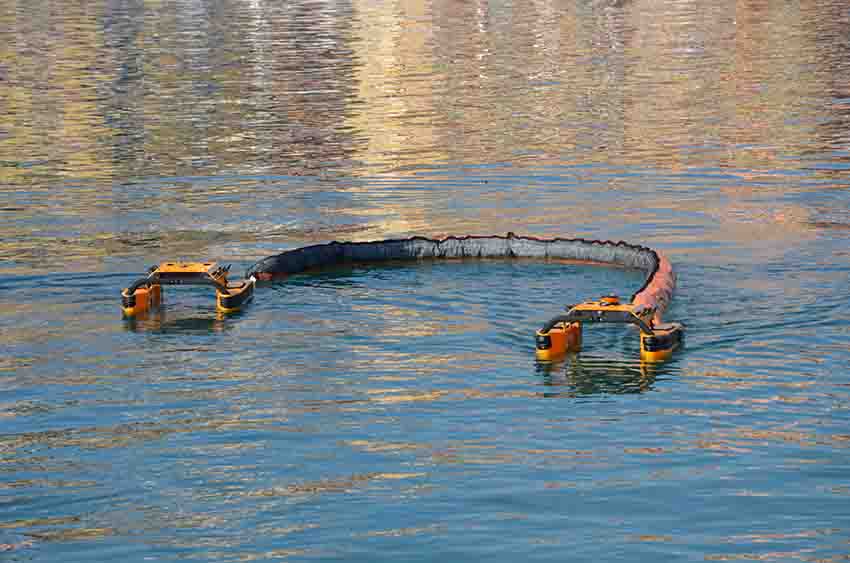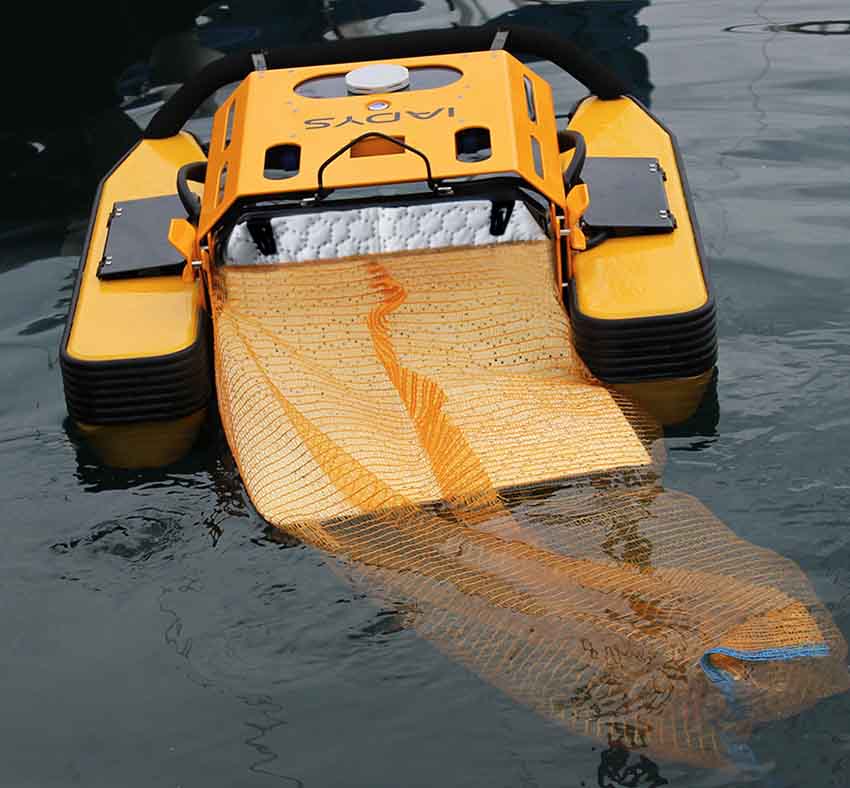IADYS designs, develops and delivers Artificial Intelligence & Robotic innovations. The startup is in particular committed to the marine environment protection, with the Jellyfishbot: a small robot that collects floating waste and oil.
Autonomous, robust and handy, the Jellyfishbot is a multi-purpose solution for the collection of waste and oil on the surface of water bodies. Genuine “Swiss Army Knife”, the Jellyfishbot is designed for all: ports, marinas, leisure and sports structures, hoteliers, camping, industrial sites and work sites, shipyards and also research institutes.
It allows the users to clean the hard-to-reach areas, in total safety, autonomously or remotely. When it’s equipped with a sonar, it can perform bathymetry surveys, up to 10m in depth, and can also be equipped with a probe for measuring the quality of the water (temperature, salinity, turbidity, level of cyanobacteria…).
Interview with Nicolas Carlési, CEO & Founder of IADYS.
Easy Engineering: What are the main areas of activity of the company?
N.C: IADYS is dedicated to the development and the delivery of the Jellyfishbot.

E.E: What’s the news about new products?
N.C: IADYS has deployed a new bathymetric survey function this autumn. In real time, the radio control of the robot (open and smart pack) will allow the operator to know and monitor the depth of the water body. The R&D team has completed the development of a web platform, IADYS Monitoring Station, designed for the in-depth exploitation of these collected data, which will then provide an accurate mapping of the depth of the water body.
This technology is possible thanks to the integration of probes on the robot, which will emit an acoustic wave (a sound) that will propagate in the water. The depth is determined by the echo and the time taken for the sound to travel from the surface of the water to the bottom and back. From these data it is possible to draw up navigation maps, to decide on the development of the coastline, the quantity of sediment to be removed or to identify bulky waste on the seabed (scooters, cadis, bins, etc.). It’s also possible to add UACS on the robot for underwater obstacle avoidance or a camera for underwater exploration.

IADYS is also working on a water sampling kit that would allow operators to measure water quality, temperature, concentration of cyanobacteria, etc. These data are precious for structures welcoming the public in their water bodies as well as for the preservation of aquatic fauna and flora.
An oil skimmer will join soon IADYS’ products inventory. It is intended for clean-up companies, but also for state anti-pollution intervention services (military, fire brigade…) and industrial sites. Combined with the Jellyfishbot, it allows the collection of oil without using consumables (reduction of operating costs) and to intervene in narrow and shallow draught areas, along river banks for example. With these planned innovations, IADYS’ order book is filling up fast.
2022 ended with IADYS and LAMOR partnering to offer the HARBO Ultra-rapid boom in combination with the Jellyfishbot. This rapid deployment boom combines perfectly with the modularity and speed of implementation of the Jellyfishbot to allow operators to intervene as quickly as possible in the event of oil pollution.

The implementation of a second level of autonomy, mobile floating obstacle avoidance, is planned for early 2023, as well as a docking station to allow the robot to recharge without having to leave the water.
E.E: What are the most innovative products marketed?
N.C: Our smart Jellyfishbot with bathymetric probe (depth measurement), the UACS (obstacle avoidance) and its association with the harbo boom for oil spill response.
E.E: What estimations do you have for 2023?
N.C: We plan to sell 75 robots this year, mostly abroad.

